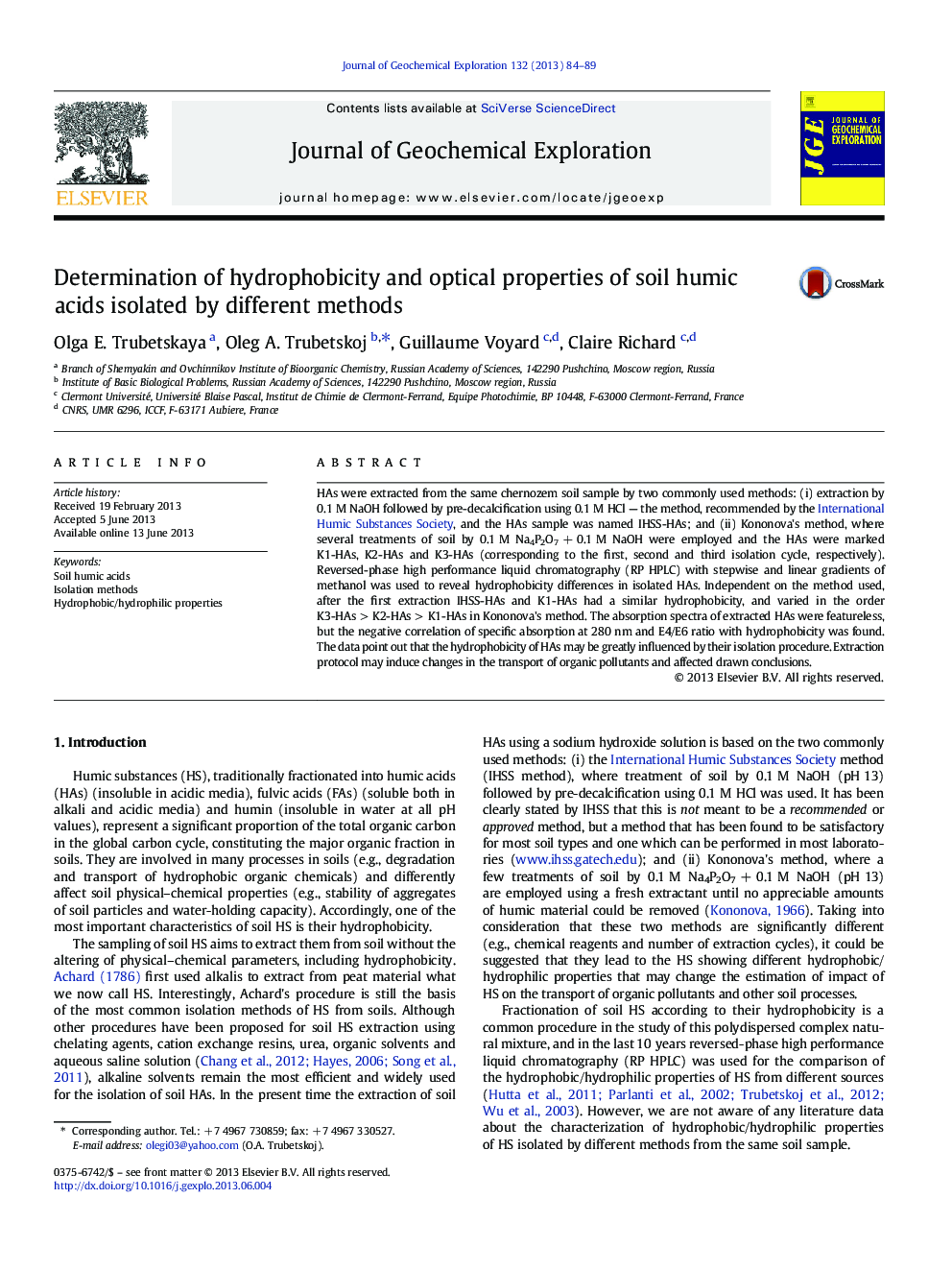| Article ID | Journal | Published Year | Pages | File Type |
|---|---|---|---|---|
| 4457478 | Journal of Geochemical Exploration | 2013 | 6 Pages |
•Two different isolations of soil HAs were used (IHSS method vs. Kononova's method).•RP-HPLC was used to reveal hydrophobicity differences in isolated soil HAs.•Relationship between absorbance, polarity and aliphaticity in isolated HAs was shown.•Extraction protocol may induce changes in some other properties.
HAs were extracted from the same chernozem soil sample by two commonly used methods: (i) extraction by 0.1 M NaOH followed by pre-decalcification using 0.1 M HCl — the method, recommended by the International Humic Substances Society, and the HAs sample was named IHSS-HAs; and (ii) Kononova's method, where several treatments of soil by 0.1 M Na4P2O7 + 0.1 M NaOH were employed and the HAs were marked K1-HAs, K2-HAs and K3-HAs (corresponding to the first, second and third isolation cycle, respectively). Reversed-phase high performance liquid chromatography (RP HPLC) with stepwise and linear gradients of methanol was used to reveal hydrophobicity differences in isolated HAs. Independent on the method used, after the first extraction IHSS-HAs and K1-HAs had a similar hydrophobicity, and varied in the order K3-HAs > K2-HAs > K1-HAs in Kononova's method. The absorption spectra of extracted HAs were featureless, but the negative correlation of specific absorption at 280 nm and E4/E6 ratio with hydrophobicity was found. The data point out that the hydrophobicity of HAs may be greatly influenced by their isolation procedure. Extraction protocol may induce changes in the transport of organic pollutants and affected drawn conclusions.
